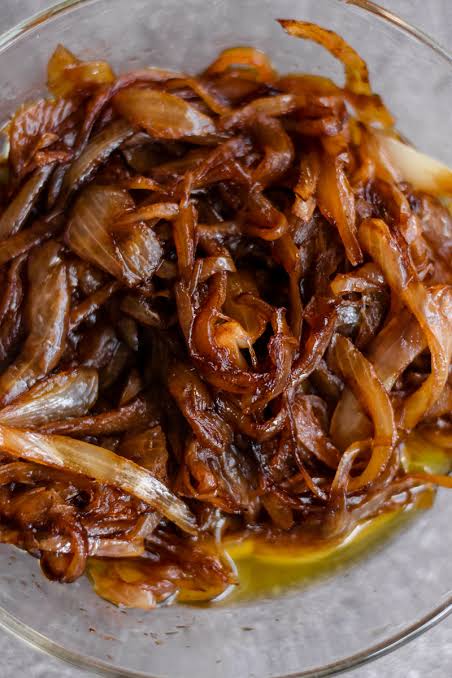Cooks argue passionately about the usage of water pans or not when roasting turkeys. While some claim that the water pan produces too much steam and mushy skin, others counter that it keeps the turkey moist and keeps it from drying out.
I’ve roasted turkeys for more than 20 years, and I’ve experimented both with and without a water pan. Both approaches, in my experience, have benefits and drawbacks, so the ideal approach for you will rely on your cooking style and personal tastes.
Arguments in favor of using a water pan:
Pros: By adding moisture to the oven, the water pan helps keep the turkey from drying out. Additionally, the water pan collects the turkey drippings, which can be utilized to create broth or gravy.
Cons: The water pan can reduce the oven’s temperature, which might lengthen the cooking time, and it can make the skin of the turkey soggy.
Arguments against using a water pan:
Advantages: Your turkey’s skin will be crispier if you cook it without using any water. Due to the lack of water to impede the cooking process, the turkey will cook more quickly.
Cons: If you don’t use a water pan, your turkey is more likely to dry up, especially if you’re cooking a big one.
My personal preference:
I prefer to roast my turkey without a water pan. I like the crispier skin that I get, and I don’t mind basting the turkey more often to keep it moist. However, if you’re worried about your turkey drying out, or if you’re cooking a very large turkey, you may want to use a water pan.
Tips for getting a crispy skin on your turkey:
- Pat the turkey dry with paper towels before roasting.
- Season the turkey skin generously with salt and pepper.
- Roast the turkey at a high temperature (425 degrees Fahrenheit) for the first 30 minutes of cooking.
- Then, reduce the heat to 350 degrees Fahrenheit and continue roasting until the turkey is cooked through.
- You can also baste the turkey skin with butter or oil during the last 30 minutes of cooking to help it crisp up.
- No matter which method you choose, be sure to use a meat thermometer to check that the turkey is cooked through before serving.
Here are some additional tips for getting a crispy skin on your turkey:
- Pat the turkey dry with paper towels before roasting.
- Season the turkey skin generously with salt and pepper.
- Roast the turkey at a high temperature (425 degrees Fahrenheit) for the first 30 minutes of cooking.
- Then, reduce the heat to 350 degrees Fahrenheit and continue roasting until the turkey is cooked through.
- You can also baste the turkey skin with butter or oil during the last 30 minutes of cooking to help it crisp up.
- No matter which method you choose, be sure to use a meat thermometer to check that the turkey is cooked through before serving.
Related posts:
Can you cook on the smoke setting on a Pit Boss?
Why is my Traeger getting hotter than setting (solution)
Frequently Asked Questions
1. Can the turkey touch the sides of the pan?
Yes, it is okay if the turkey touches the sides of the pan. It may stick in those spots and brown a little more, but it will not affect the cooking at all. In fact, some people believe that it helps to keep the turkey moist by preventing the juices from dripping away.
If you are concerned about the turkey sticking to the pan, you can brush the sides of the pan with a little bit of oil before placing the turkey inside. You can also place the turkey on a rack in the pan, which will help to elevate it and prevent it from sticking to the bottom.
Here are some additional tips for roasting a turkey:
- Make sure that the pan is large enough to hold the turkey comfortably. The turkey should not be overcrowded in the pan, as this will prevent it from cooking evenly.
- Preheat the oven to the recommended temperature before placing the turkey inside.
- Baste the turkey with its own juices every 30-45 minutes to keep it moist.
- Use a meat thermometer to check that the turkey is cooked through before serving.
- Enjoy your delicious roasted turkey!
2. Water pan vs ceramic plate
A water pan and a ceramic plate are both commonly used when roasting a turkey. However, they have different effects on the cooking process.
Water pan
A water pan is a shallow pan filled with water that is placed in the oven below the turkey. The water evaporates and creates steam, which helps to keep the turkey moist and prevents it from drying out. Water pans are also useful for catching drippings from the turkey, which can be used to make gravy or broth.
Ceramic plate
A ceramic plate is a flat dish that is placed in the oven below the turkey. The ceramic plate helps to distribute the heat evenly and prevents the turkey from sticking to the bottom of the pan. Ceramic plates can also be used to collect drippings from the turkey, but they are not as effective as water pans at keeping the turkey moist.
Which one is better?
Whether a water pan or a ceramic plate is better for roasting a turkey depends on your personal preferences. If you are looking for a crispy skin on your turkey, a ceramic plate is a good option. If you are concerned about your turkey drying out, a water pan is a better option.
Thanks for reading



